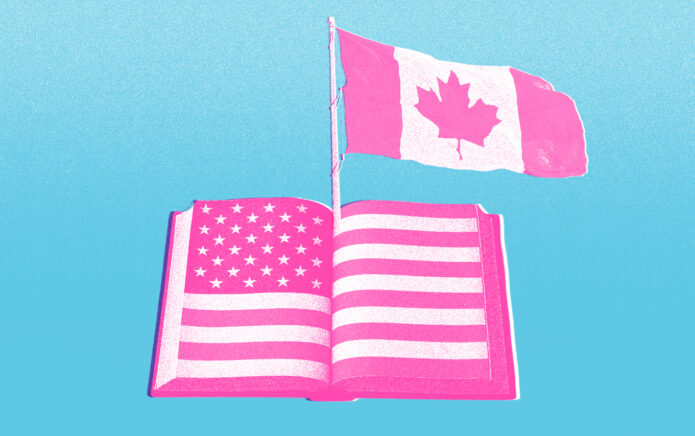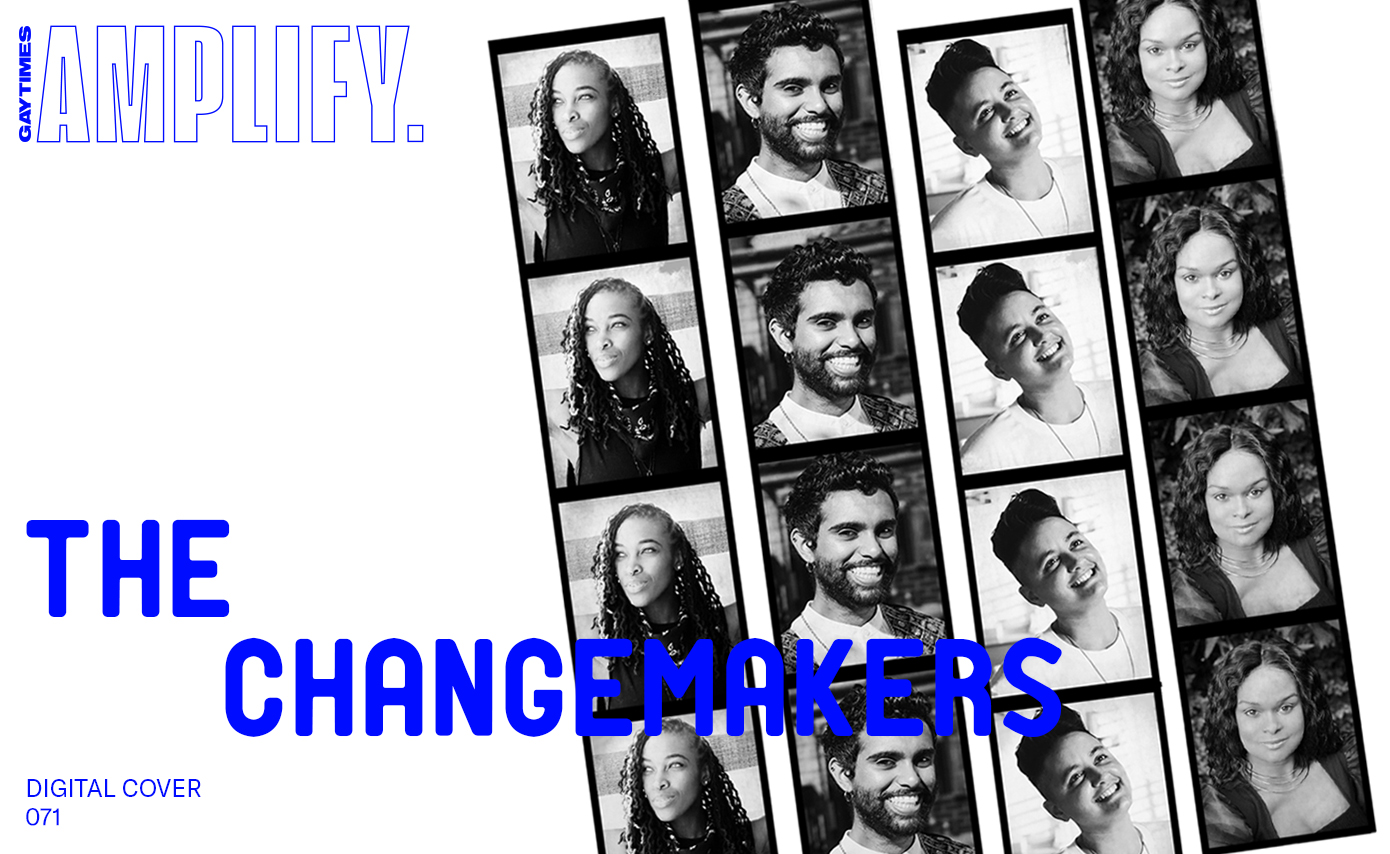
As the world evolves through pandemonium and uprising, our landscape is being ripped apart and thrown back together in a way that we have never seen before. From the Black Lives Matter movement, to transphobic legislation sweeping through the US and Europe under the cloak of COVID, our lives and worlds as LGBTQ+ people can feel like they’re in peril.
For this week’s Amplify digital cover story, we spoke to some of the changemakers and disruptors that are altering the way we see activism in 2020 in the UK, and across the Atlantic. We spoke to them about how they’re adapting and challenging the industries that they work within, while we continue to push forward into our ‘new normal’.
Both Sabah Choudrey and Nim Ralph, who are based in the UK, channel their work through supporting and allowing young trans folk to realise their true potential through creativity and activism. Over in the States, Raquel Willis and Amber Hikes talk us through the specific movements in the US that they’re working within, and the impact of the Black Lives Matter movement within queer and trans liberation.
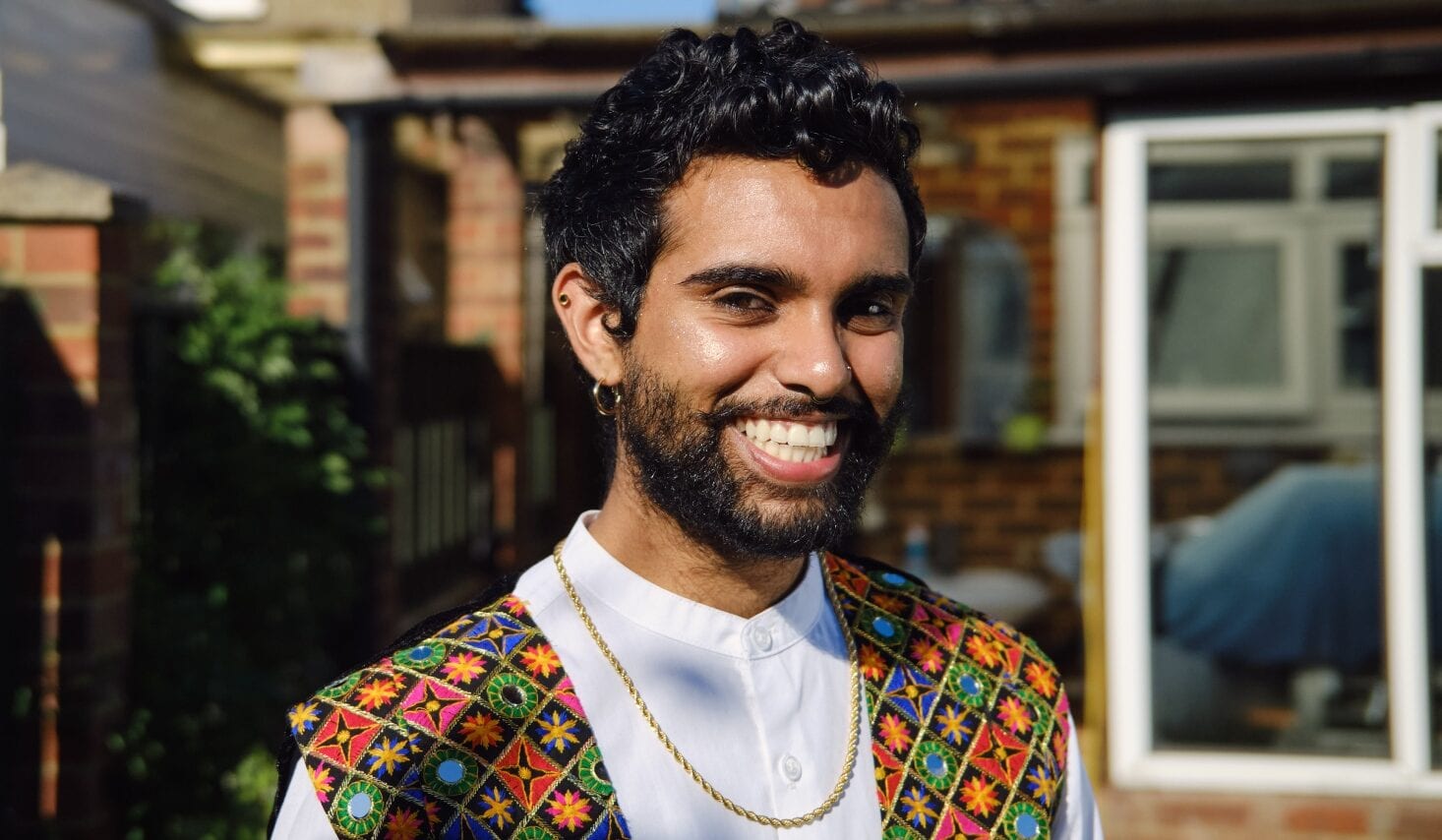
Sabah Choudrey
Sabah is the Head of Youth Services at Gendered Intelligence, a community that aims to provide arts programmes and creative workshops to trans people to raise visibility and awareness of trans folks within these industries. As well as holding this role, they are a freelance speaker, writer, educator, and also co-founder of Colours of Youth Network, working with young LGBTQ+ people of colour to allow them to celebrate exactly who they are.
First of all, congratulations on your new role as Head of Youth Services at Gendered Intelligence! What is it like working for a group like GI, and how important is the work that you do there for young folks?
Thank you so much! I’m honestly so excited and a bit spoilt working for Gendered Intelligence! It’s one of the few organisations I’ve worked in where I can be my whole authentic self and be celebrated for that too. We are a trans led organisation which means most of our staff and volunteers are trans and all our work centers our communities and supports those who impact us, like our family, schools, or employers. We’ve gone digital but we’re extending support for our more marginalised youth, building sustainable support for our BPOC trans youth and groups trans women/feminine youth.
Our youth service is youth-led and our ethos is youth empowerment. This sounds obvious, but I didn’t realise how many ways we can really involve young people in the decisions we make about our practice and future.
I think we can all get stuck into thinking that it’s safer/easier/better for adults to make decisions and be the face of our work. We attribute authority to experience but we measure experience in years, when we know lived experience is much more than just what’s on the clock. But there’s so much adults can do to make space, build safe spaces and give them the tools, access and resources to make their own decisions. As adults we have power and as youth workers we have responsibility. The work we do on ourselves is as important as the work we do for our young people.
As for our young people it is life-saving. To have a space to find out who you really are, well you could hear it from themselves, our community has said that ‘GI is the primary reason for me feeling proud in my identity’.
What is the landscape like currently for young trans folk in the UK? What’s something that you see recurring as a real issue in these young trans folks’ lives?
Trans people are used to fighting for our rights, our LGBTQ+ movements have been built on the trans women of colour who resisted and persisted. We carry their legacy forward.
Right now we’re urging the public to speak to local MPs to make sure we don’t roll back on trans rights with our #TrusstMe campaign. Despite the majority of us (70% majority from GRA consultation) in favour of making things less dangerous and difficult for trans people in the UK. We’re worried about our trans youth, we’re worried about ourselves as trans people, our families, friends and supporters are all worried about what’s coming. The issue for our trans youth is the(ir) future.
Until then, we will continue to make safe spaces for trans youth accessible. One of the things that strikes me about our trans youth is how much they just want to be together right now. Not even computer screens can stop that desire, nor the power and affirmation that comes from being in a Zoom room or Discord server with trans people. Most of the time we’re laughing at memes, frozen screens and robotic voices but it’s perfect. We just need to be together.
I think it can be quite voyeuristic, that my survival is romanticised or my identity defined as a struggle, when it’s not the whole picture and I’m just being myself.
You describe yourself as a ‘reluctant activist’, how does it feel to often be seen as just a resource and educator rather than someone that is actually still experiencing many of the problems that you’re advocating for?
I think most activists are campaigning for things that are still affecting them, and that’s actually part of the drive to make a change or take action. It’s odd though because I might not see myself as being particularly useful or doing something for others when I’m just getting on with my life. I think it can be quite voyeuristic, that my survival is romanticised or my identity defined as a struggle, when it’s not the whole picture and I’m just being myself.
It’s taught me about boundaries, that’s for sure. The first step to putting a boundary down is to recognise that there are times when I need to be a resource for myself, educate myself and advocate for myself, before I can even step back or say no. Sometimes it’s quite isolating when I’m expected to lead a change and what I really need is to slow down and be still. I think that’s where community care comes in, as opposed to self care, but I’m still figuring that one out.
What do you think activism will look like in five years time?
Hopefully it will be everything: everyday, accessible, visible. It will be seeing the whole movement and not just the peak, a spark, a protest, or a death, but all the highs, lows, collaborating, recovering, healing, and resting that happens outside of that. It will be recognising that we need to be our own advocate sometimes and that we need community care other times. It will be hearing the voices of everyone, those silenced or spoken over. When all the community work we do is ultimately for younger generations, we need young people at every step of the way. They will say, ‘nothing about us, without us,’ and we will listen.
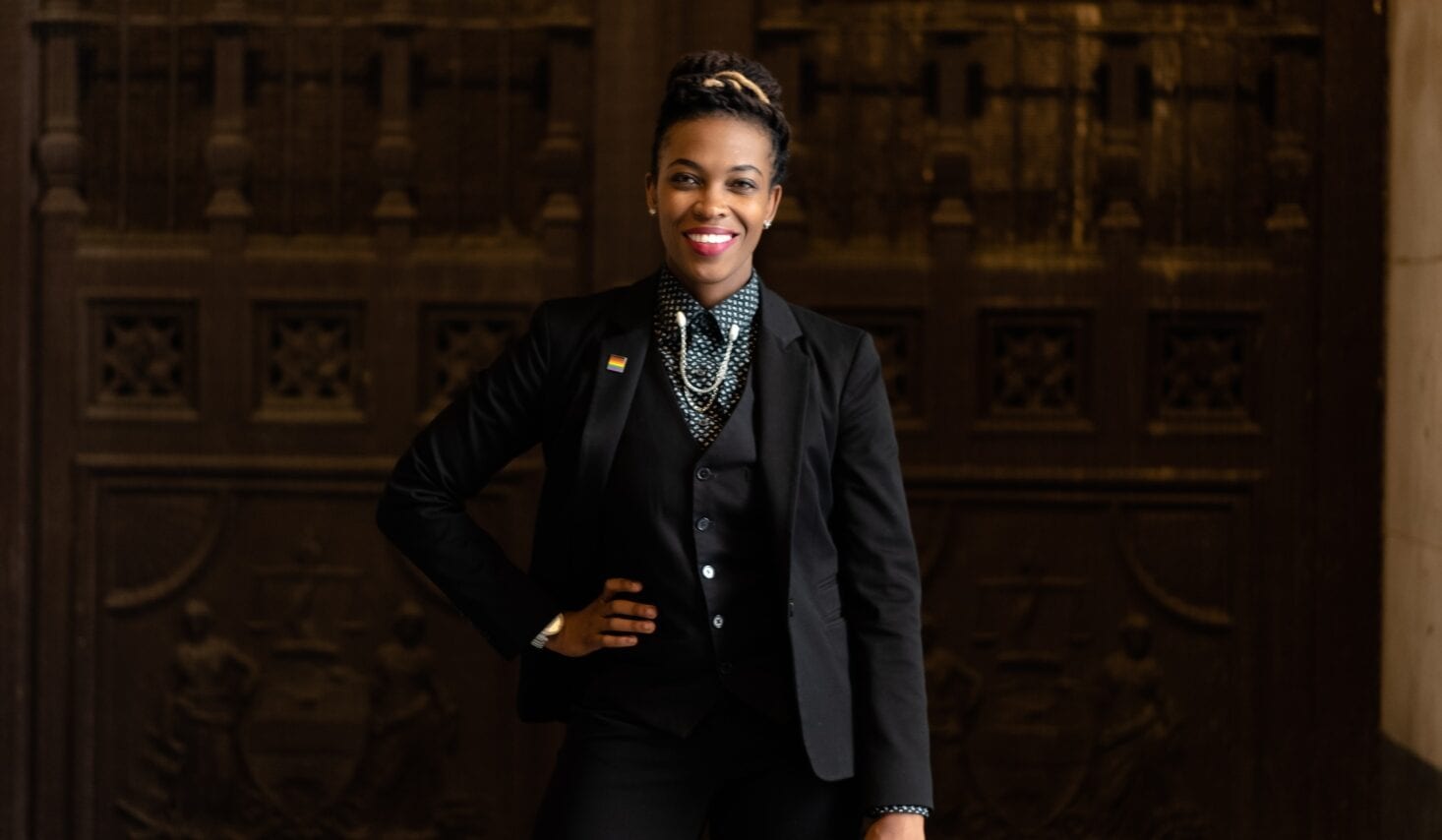
Amber Hikes
During her time as Executive Director of the Philadelphia Mayor’s Office, Amber Hikes championed for and made a reality, the black and brown stripe additions to the Pride flag. Hikes – whose work prompted an international conversation around the need to bring the voices, lives and leadership of Black and brown queer and trans people into the centre of the movement for LGBTQ+ equality – is now Chief Equity & Inclusion Officer at the American Civil Liberties Union (ACLU).
You recently shared a video of yourself during Pride, surrounded by police after yet another situation of police brutality. What was the atmosphere like in that moment, considering the fact that it was a peaceful Pride parade?
The Queer Liberation March in New York City in so many ways was the Pride space many of us have wished for, worked for, for our lives. It was a collective space, led by and centring Black and brown queer and trans voices and power. It was equal parts party and protest. It was powerful, peaceful, and joyous. It was our Pride. Finally.
Toward the end of the march, we came to Washington Square, dancing and chanting, in full celebration. To our shock, we were met by a wall of NYPD and they started to move in towards the marchers. What followed still brings me nightmares. With no notice or provocation, the cops rushed in and started charging the marchers. The music stopped and all hell broke loose as the cops tear gassed our section of the march. And we say teargas these days like it’s commonplace but let’s be clear– tear gas is chemical warfare. The video I took is harrowing. You see NYPD assaulting peaceful protestors, throwing bikes at them, punching and pepper spraying them, all on the anniversary of Stonewall.
If I’m being honest, I still haven’t processed all that happened that day because the scene was so surreal. We were in New York City, marching, dancing and chanting. We were Black and brown and queer and trans and just blocks from the Stonewall Inn…and the police attacked us…on the anniversary of Stonewall. If I didn’t witness it with my own eyes, I’m not certain I’d believe it. This story underscores what many of us have been saying for years. We talk about history as if it’s far behind us, a distant memory. But history is now. We need all of us on the frontlines, fighting for justice now. Our collective survival depends on it.
Your work allows you to travel all around the world, and I know you’ve recently worked in London with LBTQW Women. What’s that been like for you, and how have you adjusted to this new position?
Being invited to London twice in a year – once with LBTQW and once with UK Black Pride to talk about the More Color More Pride flag and the power of intersectional allyship – was such a dream. You can’t get me back there soon enough. But as we know, quarantine has changed the way all of us work, connect, and build community and that’s certainly been true for my own work. In fact, this is the longest I’ve been home in a decade. This Pride, I was invited to do many virtual sessions about the responsibility of organisations, corporations, and individuals to work to dismantle systems of oppression during this uprising. Many of those companies and organisations have a profound global impact. From an international perspective, it’s been especially powerful to see where our work and experiences intersect and where they diverge. Being able to hear, support, and uplift Black queer and trans folks in the UK and find ways to share learnings from the US and bring back learnings from all over the world is such a gift.
Never forget the legacy bestowed upon us to carry the torch further down the road for the next generation.
How do you ensure that you take time for yourself, when your work is incredibly emotional laborious?
Thank you for naming that. I’m a social worker by trade so this piece of self-care is principally important to me. I remind activists, especially Black queer and trans folks that we’re fighting for systemic change while navigating through trauma – generational, historic, vicarious and chronic. That takes a serious toll on our mental, emotional and physical wellbeing. We know we cannot pour from an empty cup, so we must be mindful of how we’re intentionally refilling our own cups whenever, wherever we can. I know it feels overwhelming but we possess the capacity to fight while focusing mightily on what brings us peace and joy. So start small. I’d ask your readers – what one thing have you done today to care for yourself? If you haven’t done it yet – make a plan to prioritise doing that today. And then again tomorrow. And a different thing the day after that. Make it a habit. For those of us from marginalised communities, this is not just the fight of our lives, it is the fight for our lives – we must take care of ourselves and each other.
Finally, the fight for liberation and justice is a journey and the road is often lonely. Above all, I remind myself that I am not alone, even when I feel I am. Those of us doing this work are carrying the power, the will, the strength of our ancestors. Never forget the legacy bestowed upon us to carry the torch further down the road for the next generation. Our people are beside us, behind us, and above us. Always.
What do you think activism will look like in five years time?
It will be intersectional. Full stop. Let me explain what I mean by that. One of the things that was really powerful about the uprising for racial justice happening during Pride month in the US is that these movements had no choice but to become one. Black trans and queer activists have always proclaimed that our oppressions are interconnected – so too is our liberation. However, when Pride marches were canceled because of COVID and the framework for these events started to turn to collective liberation spaces inspired by the Black Lives Matter movement—there was no denying that the movements for LGBTQ+ equality and racial justice are inextricably linked. So the future of activism and our movement in particular must be intersectional. We’re seeing that now more than ever but I believe—I hope—that in five years it won’t even be considered activism if it’s not intersectional.
Beyond that, the uprising has prompted an unprecedented investment in the leadership, vision, and voices of BIPOC trans and queer folks. That’s long overdue. Ayanna Pressley reminds us – “The people closest to the pain should be closest to the power”. We’re reckoning with that reality now but activism in five years will look like a redistribution of resources resulting in those most marginalised leading the path forward in our movement spaces, our organisations, our Pride events, and so much more. I’ve said it before and I’ll say it again, Black trans women must be leading our movements.
My liberation as a Black queer woman is deeply connected to the liberation of immigrants, trans and non-binary folks, people with disabilities, Muslims, people who are incarcerated, elders, and youth. Our freedom is tied up together so when we get free, – and we will get free – we’re going to get free together.
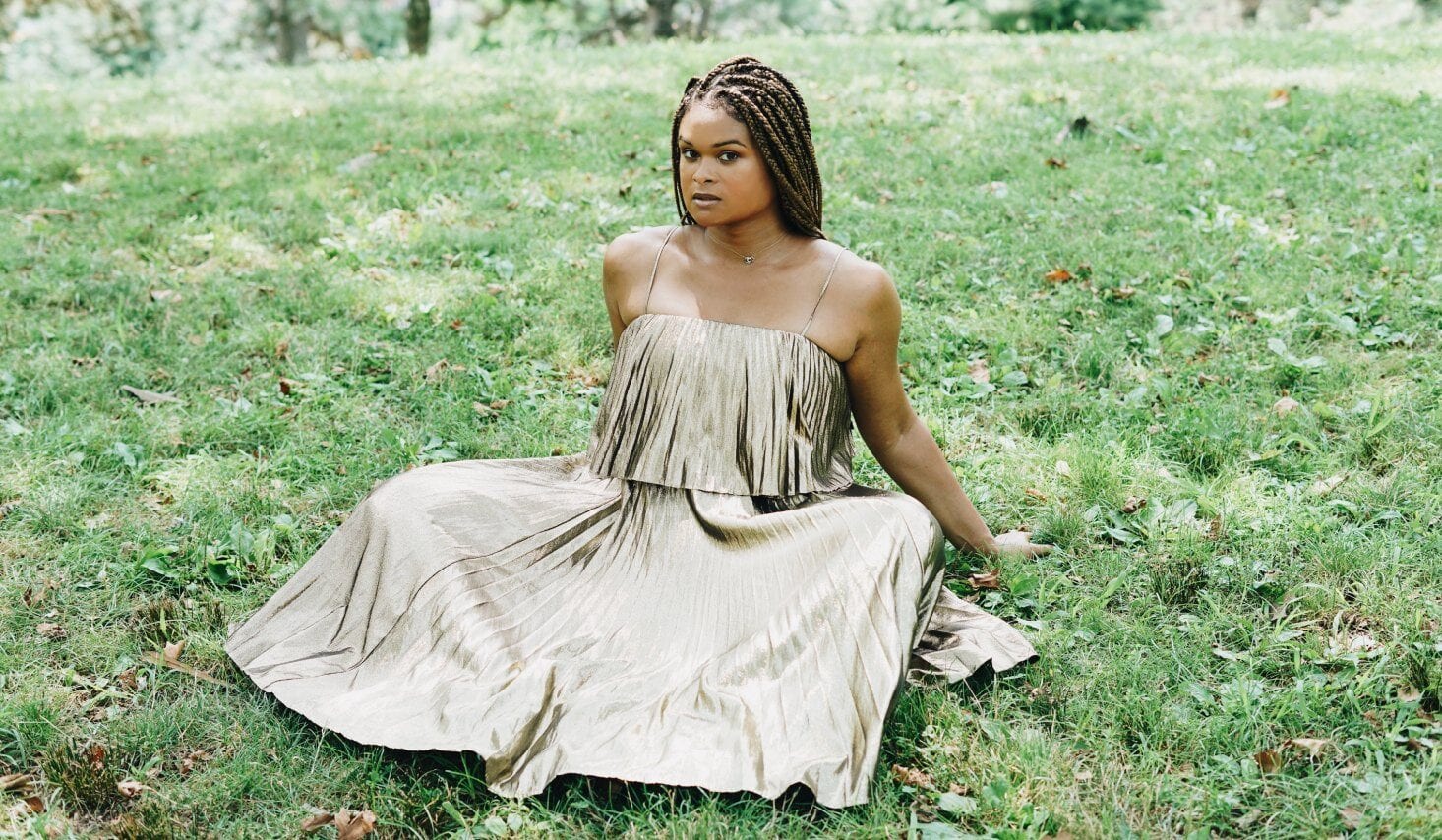
Raquel Willis
Raquel is a writer and activist, who dedicates her work and time to elevating the dignity and power of Black transgender people. Alongside this, she is the Director of Communications at Ms Foundation, whose work looks at advancing equity and justice for all by harnessing and building women’s collective power.
I have to start with your talk at the Brooklyn Liberation March for Black trans lives in Brooklyn; what was that like for you in front of 15,000 people at such a pivotal moment?
At the time, we didn’t know that there were so many people present. We estimated a few thousand and were thoroughly surprised as the march was underway that there were exponentially more people. The day felt historical, even in the moment. It was energising and cathartic in a sense. It was a display of our power despite the violence and discrimination that our community has faced for so many generations. It felt like the things that my peers and I had been saying for years was finally being heard in a new way by the masses. I tried my best to center myself as I spoke and to channel the spirit and power of our transgender ancestors like Marsha P. Johnson, Zazu Nova, Miss Major, Lady Java, Dee Dee Chamblee, and so many more.
That day felt like the beginning of something new in terms of how Black trans people are seen in society and how allyship should operate. The foundation of the march came from allies like West Dakota, Fran Tirado, Eliel Cruz, Peyton Dix, Mohammed Fayaz, and more. It was powerful seeing thousands of people out specifically for Black trans people. So often, our experiences are lost in the cracks of larger movements, whether in the LGBTQ+ movement, Black liberation movements, or in the feminist movement. It made me feel like there were more people who were invested in our liberation than I ever would have imagined.
Tell us about your new role within the Ms. Foundation for Women. How did that come about, and what does it mean to you to be working for such a vital organisation right now?
I believe that we are in a time where women’s spaces need to be making a concerted effort to support trans people and, particularly, trans women. And I thought this was a perfect time to commit to an organisation that has, in the last few years under the leadership of our CEO and president Teresa C. Younger, made a pivot to centring the leadership of Black women and girls, but also women and girls of colour in general.
I am so glad to be working with such a fantastic collective of folks invested in expanding the fight for feminism and gender justice. I also appreciate that our grantees at the foundation are moving transformative work on the ground. We are working with groups that are moving work on the front lines of the Movement for Black Lives, the Black Trans Movement, and the Indigenous Movement. They are also innovating the fights for labor equity, reproductive justice, and environmental rights. The Ms. Foundation is the glue between so many parts of the Feminist movement, and it’s time for us to coalesce together under a new vision.
The world is waking up, and folks are using this momentum to fight for things that previously seemed unfathomable.
What’s one piece of joy that you want to celebrate and highlight right now?
I am so excited to be meeting more people who are invested in this fight for liberation. I have met and connected with so many more people in the last month or so, who are moving important work. The world is waking up, and folks are using this momentum to fight for things that previously seemed unfathomable like defunding police, abolition, reallocation of resources to Black trans people, new leadership that reflects the diversity of the world.
What do you think activism will look like in five years time?
I think that we will gain clarity around the line between celebrity and activism and visibility and vitality. I think that hopefully, we will move into a space where there is more coalition-building. We are still too siloed to get all the things accomplished that we need to get accomplished. We need all people fighting simultaneously for Black liberation, Indigenous sovereignty, no borders, abolishing ICE and prisons, reproductive and disability justice, the environment, and against the exploitative nature of capitalism and imperialism. We’ve got to figure out how we can bring all of these various fights together and more for future generations.
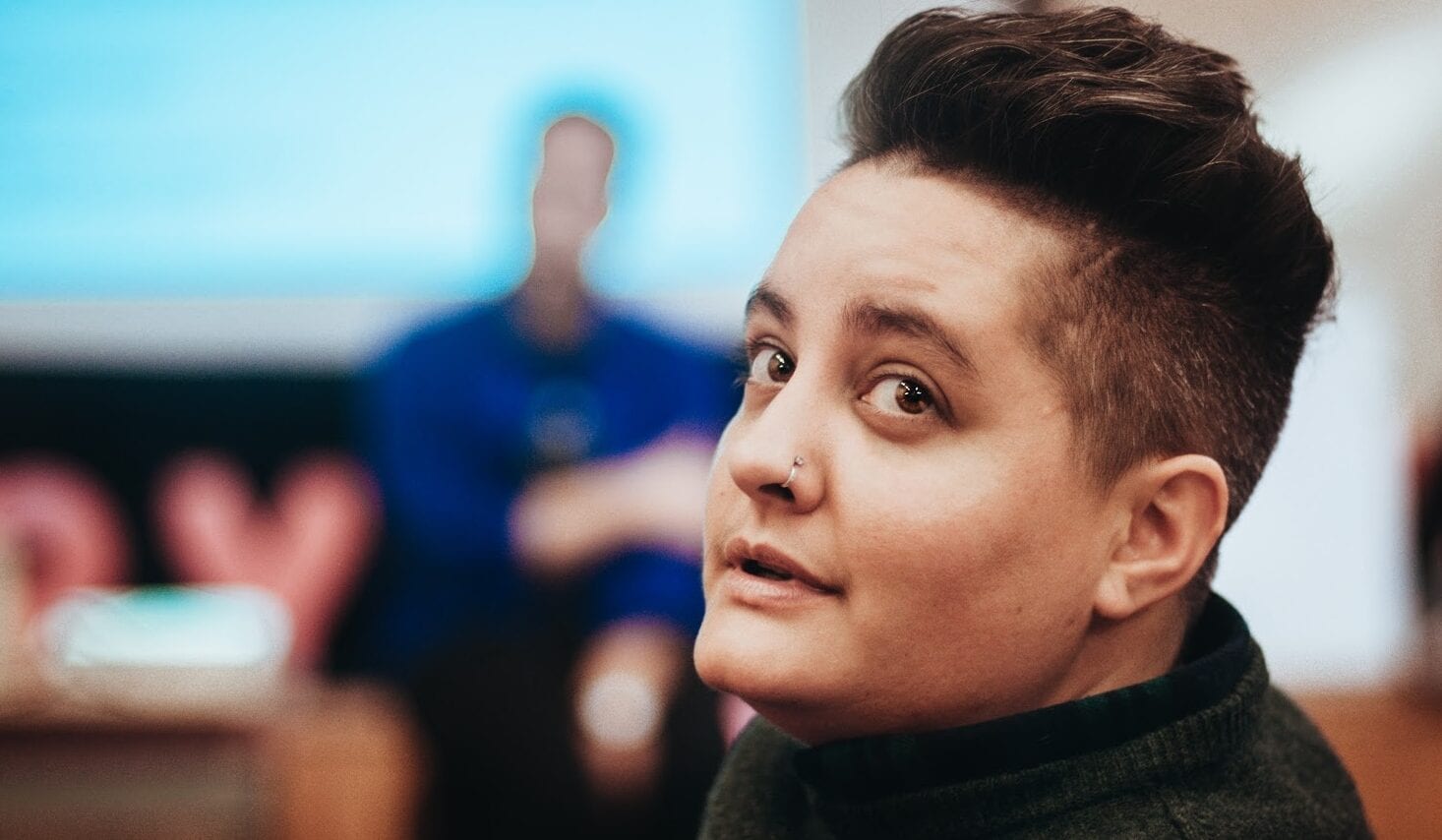
Nim Ralph
As an activist and educator, Nim Ralph’s main objective is to create a roadmap for activism, so its path can be planned, followed and adapted to our ever changing times. Their work began within the climate change movement, and has evolved and flourished now to continually focus on queer liberation for all, specifically BIPOC.
You got into activism through the climate change movement. How was that for you as a trans person within the climate activism space?
I wasn’t out as trans back then, but I was very queer and even that was a marginal experience in the movement. I was very much in a feminist and anarcho-syndicalist part of the movement where it was easier to carve out space to explore, resist, and play with gender. As a whole the climate space had a hell of a lot less analysis around power then (and it’s not exactly great now). Most of my time in the movement was fighting racism, classism, ableism, misogyny and queerphobia. I remember a particular moment at Climate Camp Kingsnorth 2008 where I had to facilitate a conversation about the toilets with over 100 people. One of the teams had started changing the toilet signs so that they didn’t say “men’s” and “women’s” and some people were confused about it at best, resistant at worst. I remember literally just having to say “it’s literally a hay bale and a wood pallet door, just say what it is and let people figure out if they want to stand up or sit down”. People seemed to really get it when we boiled it down like that. But there’s an ominous undercurrent to this story. Many of the most pro-active, anti-trans feminists now, come from that space – I was in an active community with many of them, organising with them. It feels disheartening to look back to a time when we could resolve anxiety around toilets so quickly, while fears and prejudice were being secretly harboured only to grow with such ferocity in the last few years.
A lot of your work focuses on training and working on strategy behind the scenes. What does this look like for you, and how important is it that there is a strong strategy behind all that you do?
I spend most of my time coordinating strategic action within the movement as an activist, and training and facilitating others on campaign strategy, movement building and anti-oppression. So strategy is incredibly important to the work that I do; it’s one of the central tenets of my approach to change because it keeps us focussed, accountable and effective.
I think of strategy like having a map; I know what the environment I’m in looks like, I know where I am and I know where I want to get to. With this in hand, I’m always going to be better equipped to know how to pivot when I hit inevitable issues in my journey.
For example, as trans people right now, we have been thrown into having to actively campaign for the amendments of the GRA. Most trans people ultimately don’t really care about the GRA specifically – we don’t plan to change our birth certificates. But it’s being used so maliciously as a way to open a wider cultural debate around our rights and right to exist, that strategically it’s become a battle we need to fight. Otherwise we will get thrown under the bus again like we did with the spousal veto and The Marriage (Same Sex Couples) Act 2013. What that taught us is that if we aren’t at the table, we are on the menu. So we have to show up for this fight now, to further our rights. But we also need to be sure not to mistake the GRA as our destination. If there’s one thing I wish as trans people we would shift a bit more of our attention to strategically it’s; what is our destination? It’s not enough to only want to get through this time of rampant transphobia, that’s a reaction to what we don’t want. We need to have demands. What do we want from life? Those demands need to guide our direction. When we have a demand, a destination, we can always pull our map out of our bag and check in on it; am I being focussed, accountable and effective?
We are really in a moment of needing to ask those questions right now while trans rights are being attacked in a context of a global pandemic and uprisings for Black lives. We have to ask critical questions like; how do we ensure the world is paying attention to our plight when governments are slipping through anti-trans policies under the radar? But we also have to be paying attention to how the establishment is trying to mobilise white LGBTQ+ people and their allies to distract from the fight for Black lives, and the 1000s of people dying each day from Coronavirus because of hard right government policies which value profit over people (with Black and PoC people disproportionately dying). Having the map helps us recognise that our struggles are being intentionally pitted against each other as a way to break solidarity and shared action. It forces the trans community to reckon with the fact that privilege and power operate even within our marginalisation and that Black trans voices, as well as other PoC, disabled and chronically ill and poor trans voices should be front and centre in our journey to liberation.
In that way, having a map also helps me think about the values and politics I want to carry with me in how I make change in the world, and not just what change I make. Focus, accountability, and effectiveness in the how of the journey as well. Abolitionism, racial justice, disability justice, anti-capitalism and liberation politics are frameworks I’m naming that shape not just an end goal, but how we need to be being now. Once I can see the route I’m planning I can ask myself; Am I enacting these politics in my journey as well as my destination? What have I missed? Who might this journey be causing harm to?
All women and gender minorities should be uniting in our struggle against the patriarchy and that’s what trans people are asking for.
You’ve spoken online about the lack of education and fact-based knowledge that appears from TERFs in the UK. What words would you share towards people who don’t realise how prominent trans exclusionary radical feminism is specifically in the UK?
Firstly, they are very small in number and it’s important to hold onto that in terms of remembering how much support there is for us in the current context. It’s important that we weave hope and resilience to our activism and don’t spiral so much in reacting to what’s bad that we lose perspective on how we win.
Though they’re few, they are powerful. They are otherwise progressive, but they’ve fixated on trans people in a way that engages and bolsters a far right narrative and agenda. Some of them are consciously moving in that direction (for example, Suzanne Moore has recently moved her anti-trans pieces from The Guardian to The Telegraph and The Spectator).
Right now we are seeing this messaging used to justify the GRA reforms to attack trans people’s existing rights in the Equality Act (EA). My worry is that if our populist hard right government opens the EA to amend trans rights (through the single-sex provision) they are unlikely to stop there in their amendments. Because there are 9 characteristics protected in a single Act that means that this government, who can’t be trusted to know a responsible way to check their eyesight before driving 200 miles, could use curbing trans rights as the crowbar to open up the protections of all of those protected including disabled people, Black people, people of faith and women.
The tragedy is that I really believe that many of them are so intensely and singularly focussed on the legitimate fear of sexual violence that they genuinely haven’t realised who their narratives are serving and they can’t see the harm they are recreating. Sexual violence is a real threat, but they’ve got so narrow in their understanding of that threat that they are now weaponising their fear against us. When you are 51% of the global population and you are trying to limit access to life-saving essential services of 1% of the population, you are no longer protecting safe space, you are acting in service of the oppressor (and given that 40% of all LGBTQ+ homicides in the US are committed against trans women of colour, not just patriarchy but white supremacy too). We must take heed from anti-trans feminists; trauma begets trauma. Let this be a lesson to all of us to find joy in our activism and not let our fear consume us. Let’s resist simple narratives about those who seek to harm us – they aren’t a homogenous group. A politics of scarcity and fear is no place to incubate our liberation.
All women and gender minorities should be uniting in our struggle against the patriarchy and that’s what trans people are asking for, and what we must stay true to; we should regularly pause to check our strategy map to ask ourselves what sinkholes or cul-de-sacs we have let ourselves be drawn into.
What do you think activism will look like in five years time?
To answer this question I think I have to look at my own provocation; what are my demands? A world of justice and freedom where people’s value is based just in the simple declaration that they exist. A world where complexity and difference are integral to the health of our communities. A world where our wealth is defined by what we have to support each other’s wellbeing and joy.
So in five years time, looking at where we are today and where I want us to be acknowledging a new world order is unlikely in my lifetime, unless it’s the complete decimation of the planet through industrial extraction. My hope is that we are more coordinated in our responses to injustice and crisis, that we grow a deeper and more aligned sense of solidarity, that we know how to turn out on the streets and keep each other safe. That we rebuild much of the movement infrastructure that got decimated in the Thatcher and Blair years.That the legacy of this moment is a clearer and less performative centring of Black, PoC, trans and disabled voices in our movements. Not just in name, but in action, vision and leadership. I hope some of the literal ways that manifests is a concerted health movement that mobilises around the inequity in health justice shared by trans, black, PoC and disabled communities (and especially those of us at the intersections). I hope we are well on the way to abolition with no more prisons, significant defunding of the police and better community practices in transformative justice. I hope that we have more concerted local activism that is less driven by influencer culture, and more by connecting to the people around us. I hope that local struggle is connected to the international and that we recognise we are only as safe here as our Black, brown and trans/gender non conforming siblings are anywhere in the world. I hope that the status quo in our education systems has been radically transformed and that racial, gender and disability justice are centred in curriculums and practice from nurseries to universities to work places. I hope our movements have become significantly more trauma informed and centre healing as a part of our liberation. To quote trans author, Kai Cheng Thom, ‘I hope we choose love’.
